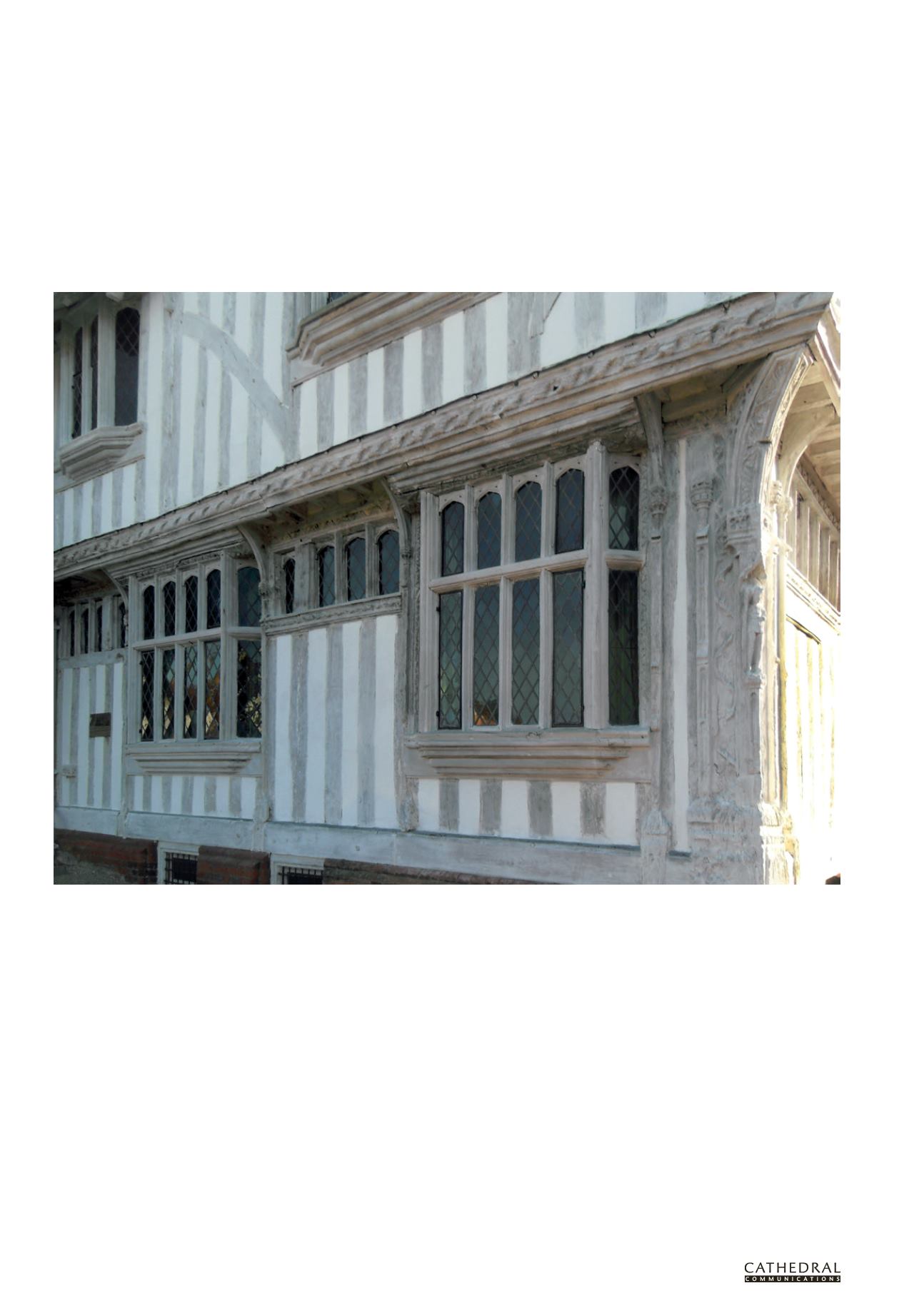

1 0 8
T H E B U I L D I N G C O N S E R VAT I O N D I R E C T O R Y 2 0 1 6
T W E N T Y T H I R D E D I T I O N
3.3
STRUCTURE & FABR I C :
ME TAL ,
WOOD & GLASS
PAINT REMOVAL FROM
HISTORIC TIMBERS
BEN KIRK
R
EMOVING PAINT
from historic timbers
is difficult and some techniques can be
highly damaging to the timber itself,
particularly in the wrong hands. Furthermore,
although paint applied in the recent past may
be considered historically inappropriate, it
may overlie older decorative schemes of great
historic significance.
In England, the decorative painting of
internal timbers began in the late 15th and
early 16th centuries as enclosed fireplaces and
glazed windows became more commonplace,
creating homes which were better lit and freer
from smoke and soot.
Especially in the south east and east
of England, it was common for external
timbers to be limewashed, along with the
infill panels, with a mixture of ‘fat’ (non-
hydraulic) lime and a binder such as tallow.
Some timbers were painted, often in reds,
with a colour wash made by mixing the
limewash with animal glue size or stale beer
and colouring it with earth pigments such
as ochre. Many timbers, however, were left
completely unpainted.
Lead paints consisting of finely ground
white lead pigment (lead carbonate or
lead sulphate) mixed with boiled linseed
oil and thinned with turpentine were
used from the 17th century. They have a
distinctive character, drying with a slight
sheen and retaining brush marks. When
they weather externally lead paints tend
to become ‘chalky’ rather than peeling.
White spirits replaced turpentine in the
19th century and barites (barium sulphate)
were added as a pigment extender. By the
middle of the 19th century the harmful nature
of lead was better understood and zinc oxide
became widely used, although this proved to
be less flexible than lead-based paint and so
was often mixed with lead as a compromise.
In the early 20th century non-toxic titanium
dioxide was introduced to replace lead, while
alkyd resins replaced linseed oil. By the mid-
1960s lead had been removed from most paints
and by the 1980s it had been removed from all
paints on general sale.
In many historic buildings in the UK
exposed structural timbers, both internally
and externally, are painted, usually in black,
providing the black and white effect that is
typical of so many English villages. It has been
suggested that painting timbers black was
Limewashed timbers at the Guildhall of Corpus Christi, Lavenham, Suffolk: here the historic importance of the decoration is obvious, but careful investigation is vital
where later paint layers are to be removed as they often hide early schemes.
















